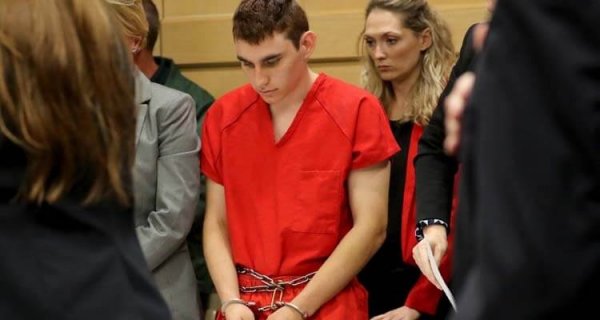School Shootings: what's in the Minds of these Killers?


Written and verified by the psychologist Valeria Sabater
School shootings are a sad phenomenon, even more so if we take into consideration how often they occur. Behind these acts, and only in 5% of cases, there is a mental disorder. The rest of the profiles show other triggering factors, such as physical or psychological abuse, family uprooting, school bullying, parents’ criminal records and above all, access to firearms and the culture associated with them.
After the massacre on February 14 at the Marjorie Stoneman Douglas Highschool, President Trump tweeted: “So many signs that the Florida shooter was mentally disturbed, even expelled from school for bad and erratic behavior. Neighbors and classmates knew he was a big problem. Must always report such instances to authorities, again and again!”
In the social structure of American schools, violent stimuli related to gun culture or racism is a very common phenomenon.
While it is true that Nikolas Cruz fitted perfectly inside the risk profile: expelled and marginalized student, that frequently exhibited his fascination for firearms, there is something much deeper in this phenomenon. Something much more obscure and deeply rooted that goes beyond mental health. Something that implies every social organism from American society itself. Let’s look into it with detail.

School shootings, a society problem
Nikolas Cruz, 19 years old, has taken the lives of 17 high school classmates, leaving a dozen wounded. Adding his name to the long saga of individuals that armed with frustration, anger and contempt, perpetrate a deadly plan; one where they point and shoot mercilessly to their peers and teachers. They are led by their fascination with weapons as the only answer to their problems.
It may be surprising but, every month a shooting or gun related incident occurs in US schools. As a matter of fact, since 2012, when Adam Lanza killed 20 people (7-year-old children and their teachers), there have been 239 shootings in high schools. All of this translates into 438 injured people and 138 deaths in the last six years.
Senators, collectives and personalities who are against the use of firearms do not stop insisting on a very concrete fact: the massacres are increasing every year. This is not casual, it is not bad luck or an epidemic of mental disorders. What is happening in the United States with school shootings is the result of the inaction of a society. The people who perpetrate them not only have the opportunity, but also have the means.
It is not just about debating the need or not to prohibit or regulate the use of weapons, which by itself is already relevant. It is also a priority to delve into what motivates these young people to resort to such assault using rifles or guns as a way to channel their anger or their problems.

The profile of school shootings murderers
The massacre of April 20, 1999 at the Columbine High School was a before and after. It brought awareness to a reality that highlighted the violence contained in the United States. It also meant taking new measures in schools, holding shooting drills to learn how to react to these situations, and also caused that secret services took this type of massacre and its motivations more seriously.
In the year 2000, experts elaborated a psychological profile to understand the mental architecture of these killers in a deeper way. These would be the main features:
- The shooters meticulously premeditate the attacks. They are not casual acts or the results of a moment of mental alienation.
- 80% of these people have suffered bullying. They accumulate a history of mistreatment, harassment and high emotional strain generated by their own peers’ environment.
- A high percentage is part of broken families, where one of the parents has a criminal record.
- People without mental disorders commit 95% of the murders. That is, mental illnesses such as schizophrenia, are not associated with violence.
- In 100% of cases there is a direct fascination with weapons. Generally they give open samples of it, either to other colleagues or through social networks.
- The violence in these young people, some of them even children, is not casual or sudden. In reality it is like a complex, slow but powerful process that is being built in their minds over time.
- The violent stimuli that can surround them, combined with environmental stress and distorted thoughts, tend to build in them a dehumanized mental armor. That emotional coldness finally makes them look at murder like a rewarding and even justifiable escape route.

So, what is the solution to school shootings?
A Republican senator hastened to venture that the solution to school shootings is pretty simple: giving weapons to good men so they can face those evil young men who seek to harm their classmates. However, arming (supposedly) “good men” would only fuel the same violent circle. This would demonstrate once again that the best way to solve a conflict is through the use of weapons.
The violence culture feeds the violence itself. The other virus is institutional, educational and social neglect, and a country that makes the use of weapons the essence of its identity. This, obviously, is not the right way. Therefore, something that the medical and educational community points to is the need to implement in schools more psychological attention to their students. Somewhere they can attend, intuit and prevent this type of situations.
With the help of psychologists and social workers, these young people could be better cared for. In one way or another they often give warning signs, clues that can be addressed as soon as possible to avoid further school shootings. Those that, remember, happen every month.
School shootings are a sad phenomenon, even more so if we take into consideration how often they occur. Behind these acts, and only in 5% of cases, there is a mental disorder. The rest of the profiles show other triggering factors, such as physical or psychological abuse, family uprooting, school bullying, parents’ criminal records and above all, access to firearms and the culture associated with them.
After the massacre on February 14 at the Marjorie Stoneman Douglas Highschool, President Trump tweeted: “So many signs that the Florida shooter was mentally disturbed, even expelled from school for bad and erratic behavior. Neighbors and classmates knew he was a big problem. Must always report such instances to authorities, again and again!”
In the social structure of American schools, violent stimuli related to gun culture or racism is a very common phenomenon.
While it is true that Nikolas Cruz fitted perfectly inside the risk profile: expelled and marginalized student, that frequently exhibited his fascination for firearms, there is something much deeper in this phenomenon. Something much more obscure and deeply rooted that goes beyond mental health. Something that implies every social organism from American society itself. Let’s look into it with detail.

School shootings, a society problem
Nikolas Cruz, 19 years old, has taken the lives of 17 high school classmates, leaving a dozen wounded. Adding his name to the long saga of individuals that armed with frustration, anger and contempt, perpetrate a deadly plan; one where they point and shoot mercilessly to their peers and teachers. They are led by their fascination with weapons as the only answer to their problems.
It may be surprising but, every month a shooting or gun related incident occurs in US schools. As a matter of fact, since 2012, when Adam Lanza killed 20 people (7-year-old children and their teachers), there have been 239 shootings in high schools. All of this translates into 438 injured people and 138 deaths in the last six years.
Senators, collectives and personalities who are against the use of firearms do not stop insisting on a very concrete fact: the massacres are increasing every year. This is not casual, it is not bad luck or an epidemic of mental disorders. What is happening in the United States with school shootings is the result of the inaction of a society. The people who perpetrate them not only have the opportunity, but also have the means.
It is not just about debating the need or not to prohibit or regulate the use of weapons, which by itself is already relevant. It is also a priority to delve into what motivates these young people to resort to such assault using rifles or guns as a way to channel their anger or their problems.

The profile of school shootings murderers
The massacre of April 20, 1999 at the Columbine High School was a before and after. It brought awareness to a reality that highlighted the violence contained in the United States. It also meant taking new measures in schools, holding shooting drills to learn how to react to these situations, and also caused that secret services took this type of massacre and its motivations more seriously.
In the year 2000, experts elaborated a psychological profile to understand the mental architecture of these killers in a deeper way. These would be the main features:
- The shooters meticulously premeditate the attacks. They are not casual acts or the results of a moment of mental alienation.
- 80% of these people have suffered bullying. They accumulate a history of mistreatment, harassment and high emotional strain generated by their own peers’ environment.
- A high percentage is part of broken families, where one of the parents has a criminal record.
- People without mental disorders commit 95% of the murders. That is, mental illnesses such as schizophrenia, are not associated with violence.
- In 100% of cases there is a direct fascination with weapons. Generally they give open samples of it, either to other colleagues or through social networks.
- The violence in these young people, some of them even children, is not casual or sudden. In reality it is like a complex, slow but powerful process that is being built in their minds over time.
- The violent stimuli that can surround them, combined with environmental stress and distorted thoughts, tend to build in them a dehumanized mental armor. That emotional coldness finally makes them look at murder like a rewarding and even justifiable escape route.

So, what is the solution to school shootings?
A Republican senator hastened to venture that the solution to school shootings is pretty simple: giving weapons to good men so they can face those evil young men who seek to harm their classmates. However, arming (supposedly) “good men” would only fuel the same violent circle. This would demonstrate once again that the best way to solve a conflict is through the use of weapons.
The violence culture feeds the violence itself. The other virus is institutional, educational and social neglect, and a country that makes the use of weapons the essence of its identity. This, obviously, is not the right way. Therefore, something that the medical and educational community points to is the need to implement in schools more psychological attention to their students. Somewhere they can attend, intuit and prevent this type of situations.
With the help of psychologists and social workers, these young people could be better cared for. In one way or another they often give warning signs, clues that can be addressed as soon as possible to avoid further school shootings. Those that, remember, happen every month.
This text is provided for informational purposes only and does not replace consultation with a professional. If in doubt, consult your specialist.







